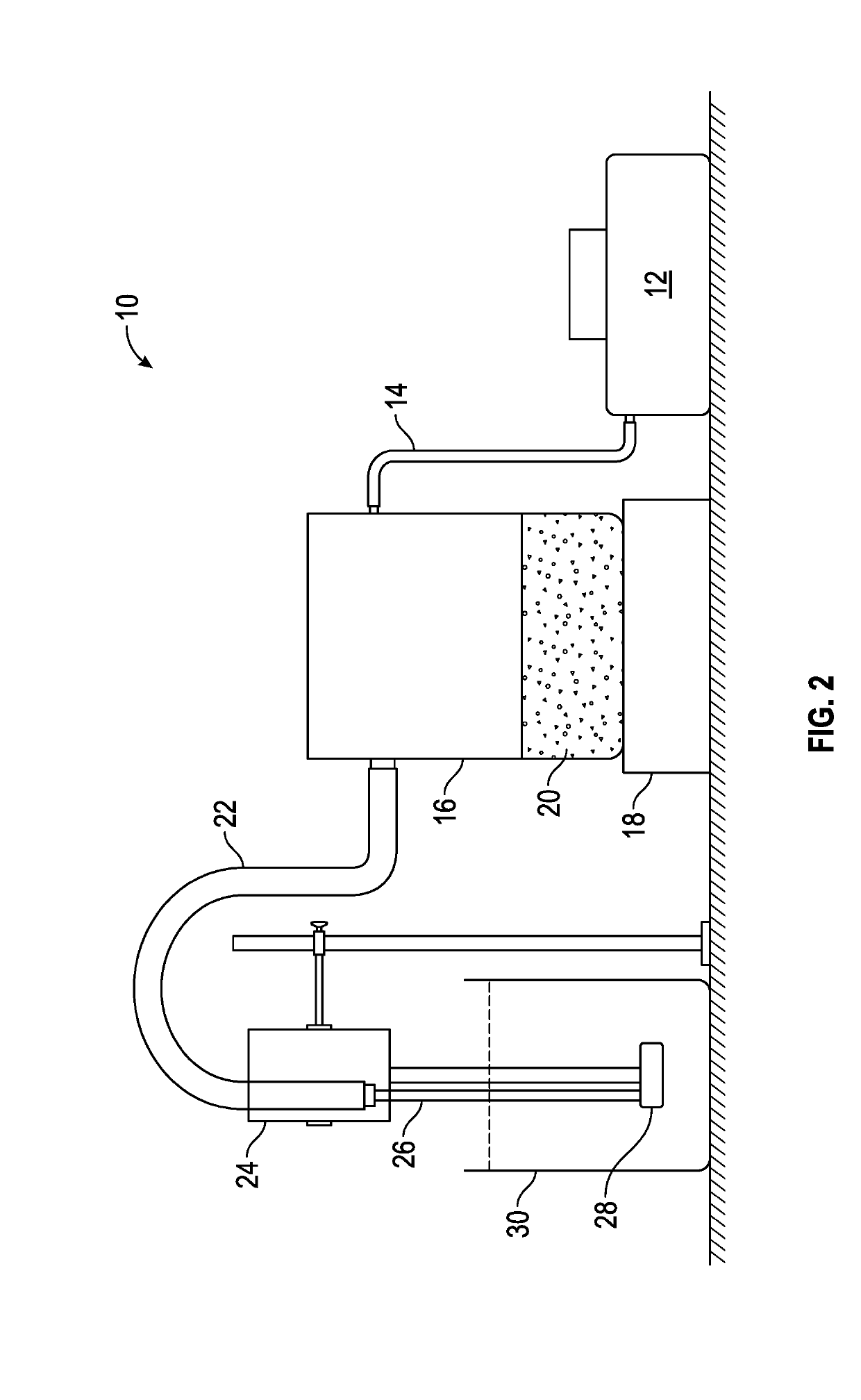Methods For Making Grill-Type Smoked Food Ingredients
- Summary
- Abstract
- Description
- Claims
- Application Information
AI Technical Summary
Benefits of technology
Problems solved by technology
Method used
Image
Examples
example 1
on of Flavoured Oil
[0084]A grill flavour was prepared by combustion of high oleic acid sunflower oil (smoke point—323° C., flash point—315° C., fire point—371° C.).
[0085]Materials
[0086]Charcoal dust (particle size up to approx. 1 mm)—4500 g
[0087]Oak sawdust—4500 g
[0088]Combustion oil (flavour source): High Oleic Sunflower Oil—180 g
[0089]Carrier oil: High Oleic Sunflower Oil—2 L
[0090]Apparatus
[0091]Combustion apparatus, shown schematically in FIG. 1 was made up of a smoke furnace 2 into which air was pumped from fan 1. Smoke exiting the chamber passed via silicon tube 5 into mixing vessel 4 with continuous agitation by low-shear mixer 3.
[0092]Method
[0093]The 4500 g of charcoal and 4500 g of oak sawdust were weighed and mixed thoroughly to produce a homogenous blend. The blend was transferred into the smoke furnace. Two litres of high oleic sunflower oil were measured and transferred in the mixer vessel. The smoke furnace and the mixing vessel were connected using a silicon pipe. Afte...
example 2
on of Flavoured Oil
[0096]A grill flavour was prepared by combustion of high oleic acid sunflower oil (smoke point—323° C., flash point—315° C., fire point—371° C.).
[0097]Materials
[0098]Charcoal dust (particle size up to approx. 1 mm)—4500 g
[0099]Oak sawdust—4500 g
[0100]Combustion oil (flavour source): High Oleic Sunflower Oil—180 g
[0101]Carrier oil: High Oleic Sunflower Oil—2 L
[0102]Apparatus
[0103]Combustion apparatus, shown schematically in FIG. 1 was made up of a smoke furnace 2 into which air was pumped from fan 1. Smoke exiting the chamber passed via silicon tube 5 into mixing vessel 4 with continuous agitation by low-shear mixer 3.
[0104]Method
[0105]The 4500 g of charcoal, 4500 g of oak sawdust and 180 g of combustion oil were weighed and mixed thoroughly to produce a homogenous blend. The blend was transferred into the smoke furnace. Two litres of high oleic sunflower oil were measured and transferred in the mixer vessel. The smoke furnace and the mixing vessel were connected u...
example 3
on of Flavoured Oil
[0108]A grill flavour was prepared by combustion of beef dripping.
[0109]Materials
[0110]Charcoal dust (particle size up to approx. 1 mm)—4500 g
[0111]Oak sawdust—4500 g
[0112]Combustion oil (flavour source): Beef dripping—180 g
[0113]Carrier oil: High Oleic Sunflower Oil—2 L
[0114]Apparatus and Method
[0115]The procedure was repeated as for, and using the apparatus of, Examples 1 and 2 using the different combustion oil—in this case beef dripping.
[0116]After the same period of continuous smoking, the carrier oil was tested and also found to have a pleasant grill-type flavour. Similarly detailed testing of this oil is planned.
PUM
 Login to View More
Login to View More Abstract
Description
Claims
Application Information
 Login to View More
Login to View More - R&D
- Intellectual Property
- Life Sciences
- Materials
- Tech Scout
- Unparalleled Data Quality
- Higher Quality Content
- 60% Fewer Hallucinations
Browse by: Latest US Patents, China's latest patents, Technical Efficacy Thesaurus, Application Domain, Technology Topic, Popular Technical Reports.
© 2025 PatSnap. All rights reserved.Legal|Privacy policy|Modern Slavery Act Transparency Statement|Sitemap|About US| Contact US: help@patsnap.com


